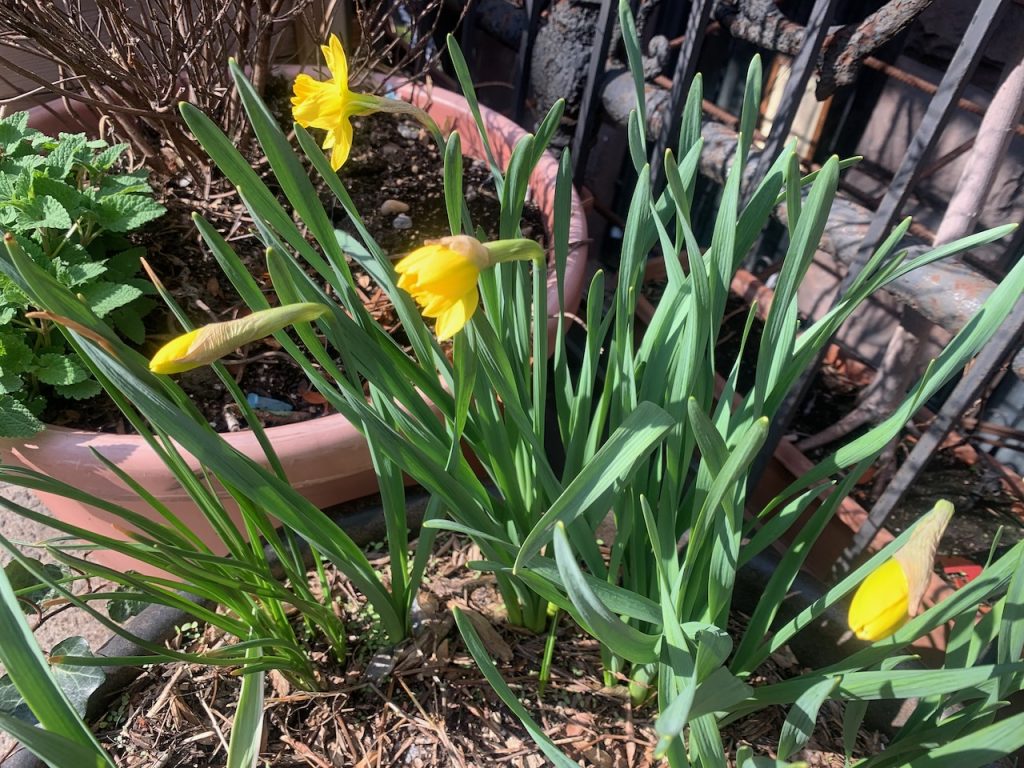Most of the tulips haven’t opened yet, but this one did — and caught a bit of afternoon rain for its troubles.
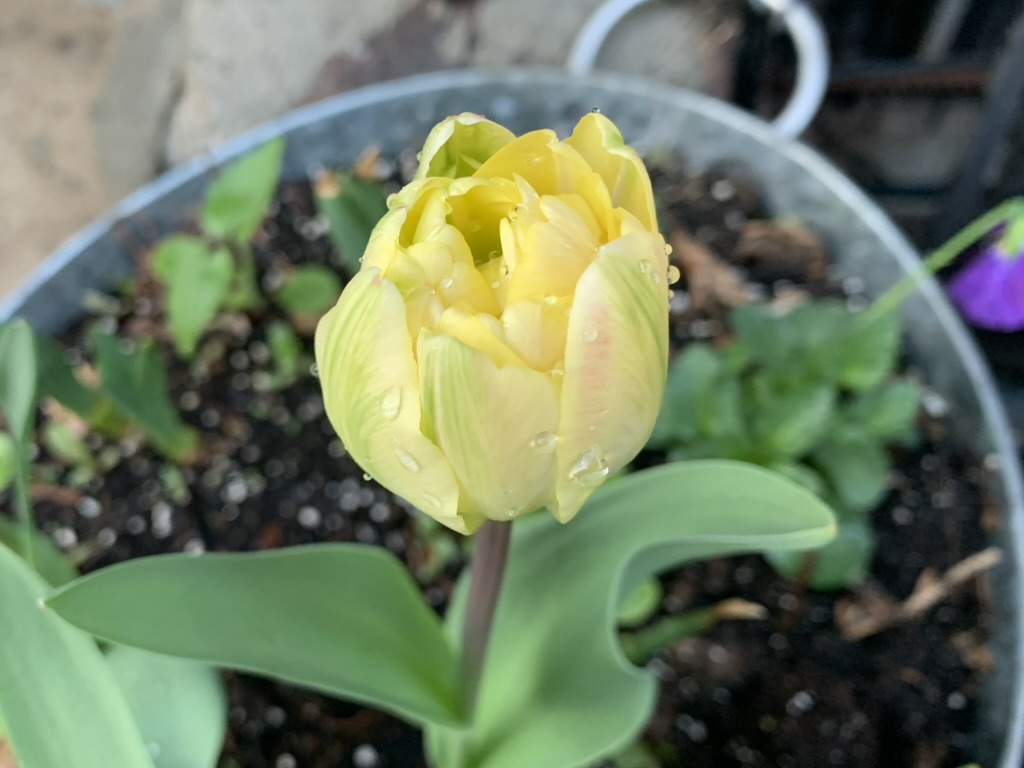
Sidewalk Greenspace on New York's Upper West Side
Most of the tulips haven’t opened yet, but this one did — and caught a bit of afternoon rain for its troubles.

Although most of the cold-hardy perennials return each year, this winter seems to have been unusually challenging, and a few of the trusty standbys seem to have passed away.
I’ll need to find some new plants to take the place of the one little rose bush that didn’t make it, as well as the small azalea, and some of the grape vines.
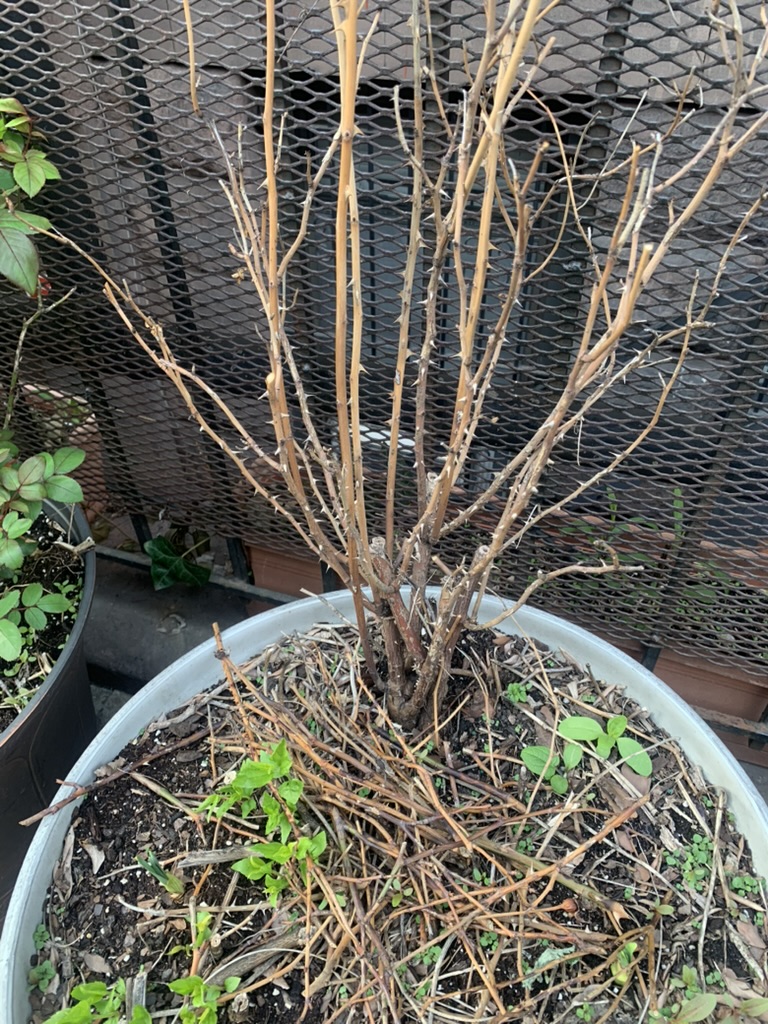
There are several varieties of mint-family plants that have colonized our sidewalk planters and return from seed every year, but my eye is not acute enough to figure out which this is — hopefully it’s a spearmint, but more likely to be a lemon balm or catnip.
[Update:] Jury is still out but it’s most likely a lemon balm.

The little volunteer elm trees that I’ve woven into the fence are starting to leaf out.

Our sidewalk treebeds are truly activated, with a variety of bulbs putting up their spring growth to produce overlapping regions of different shades of green.
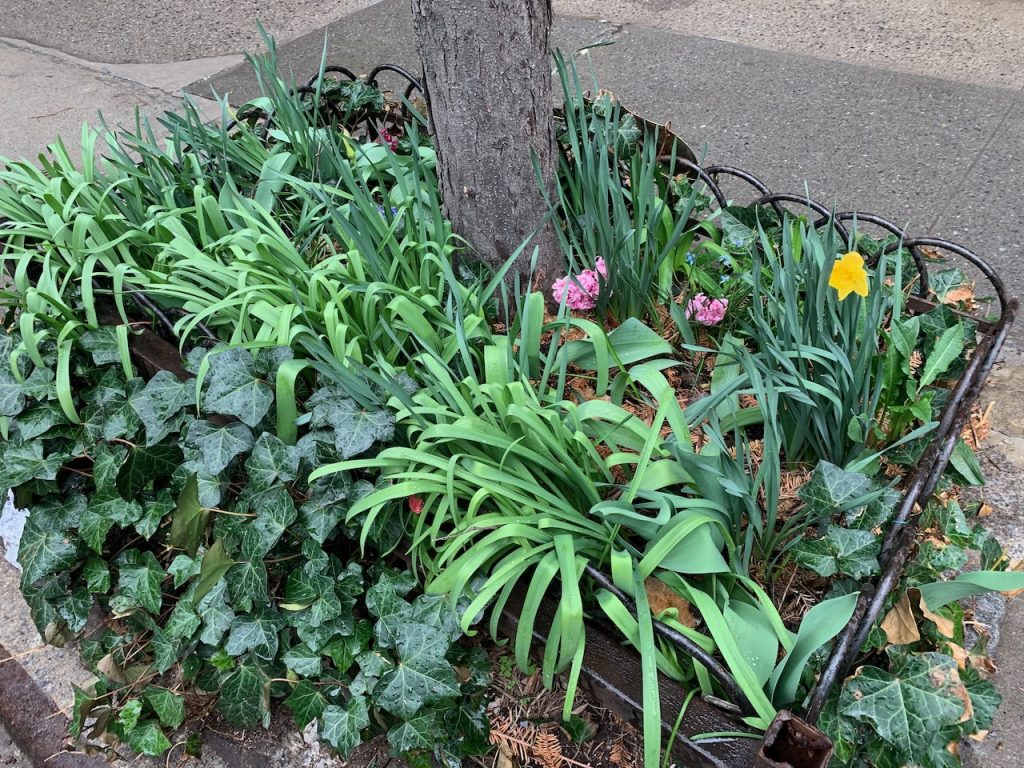
The violets are flowering!

More color in the sidewalk treebed outside 217 W106th.

Hyacinths caught a bit of the afternoon rain.

Some of the hyacinths have full-blown clusters with lots of flowers packed side-by-side, while others… not so much.
But these little ones still have a delicate beauty all their own.
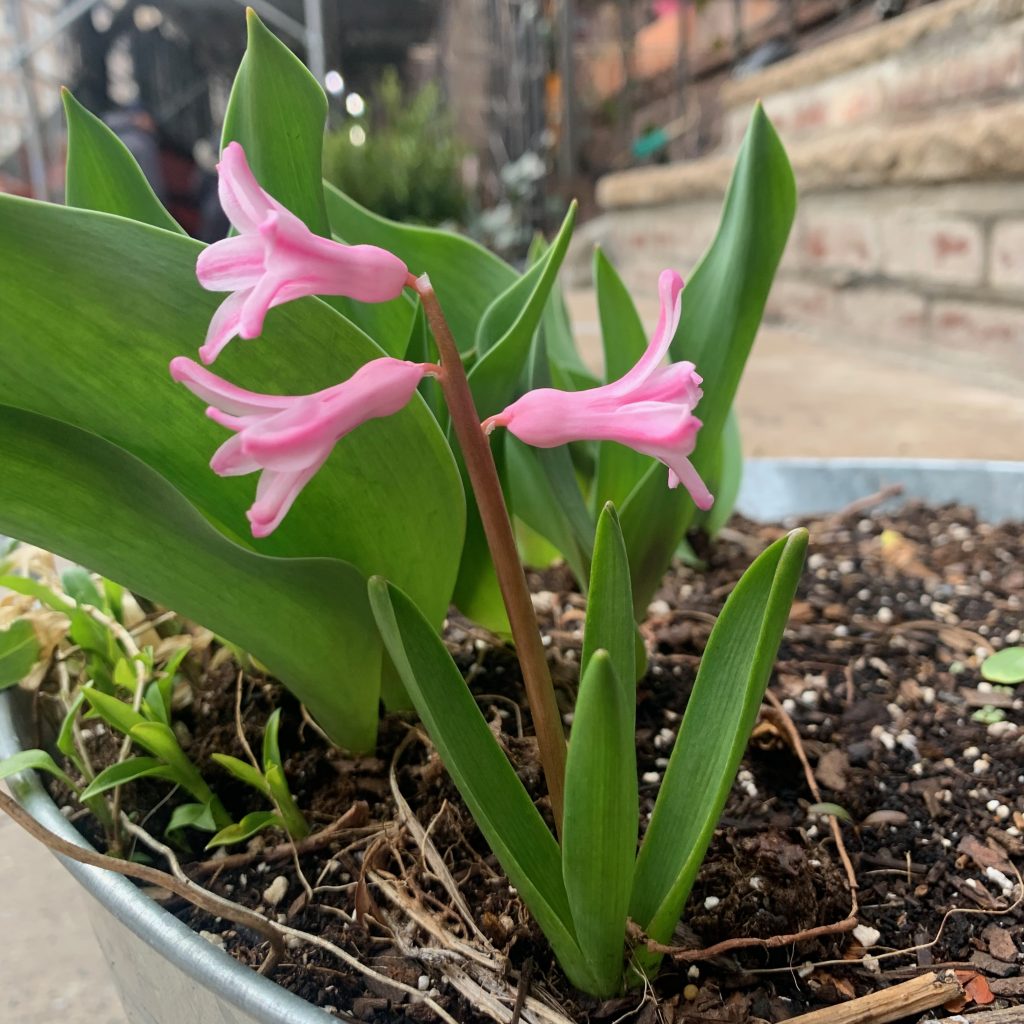
We still have a few more scattered cold nights ahead of us, but with the equinox behind us and daytime temperatures in the fifties every day, I was pleased to see that the first of our daffodils have opened.
